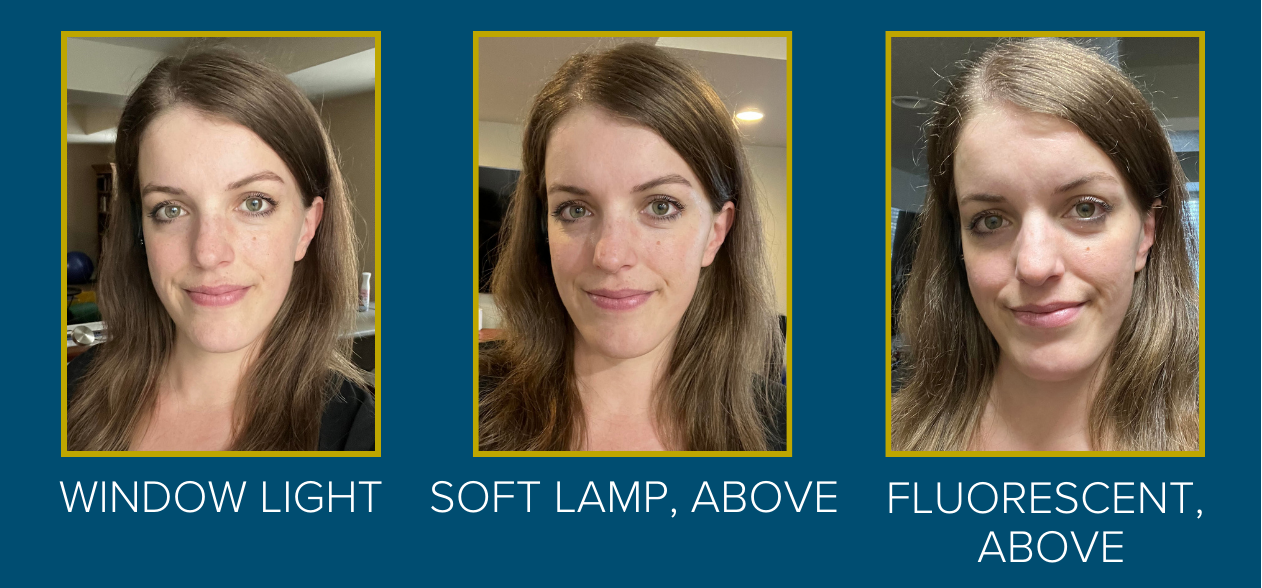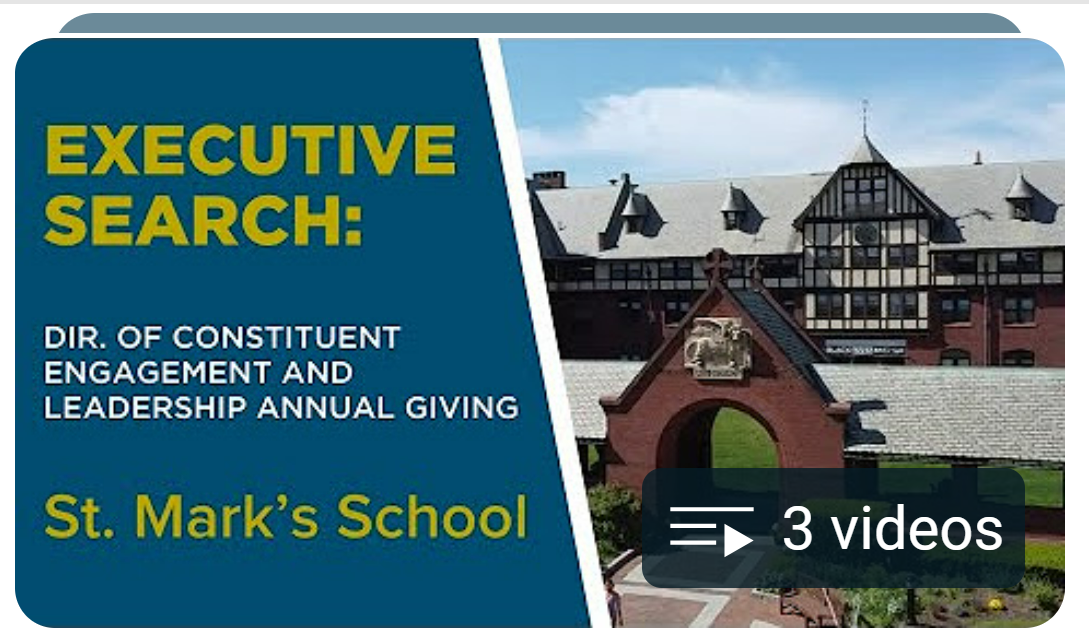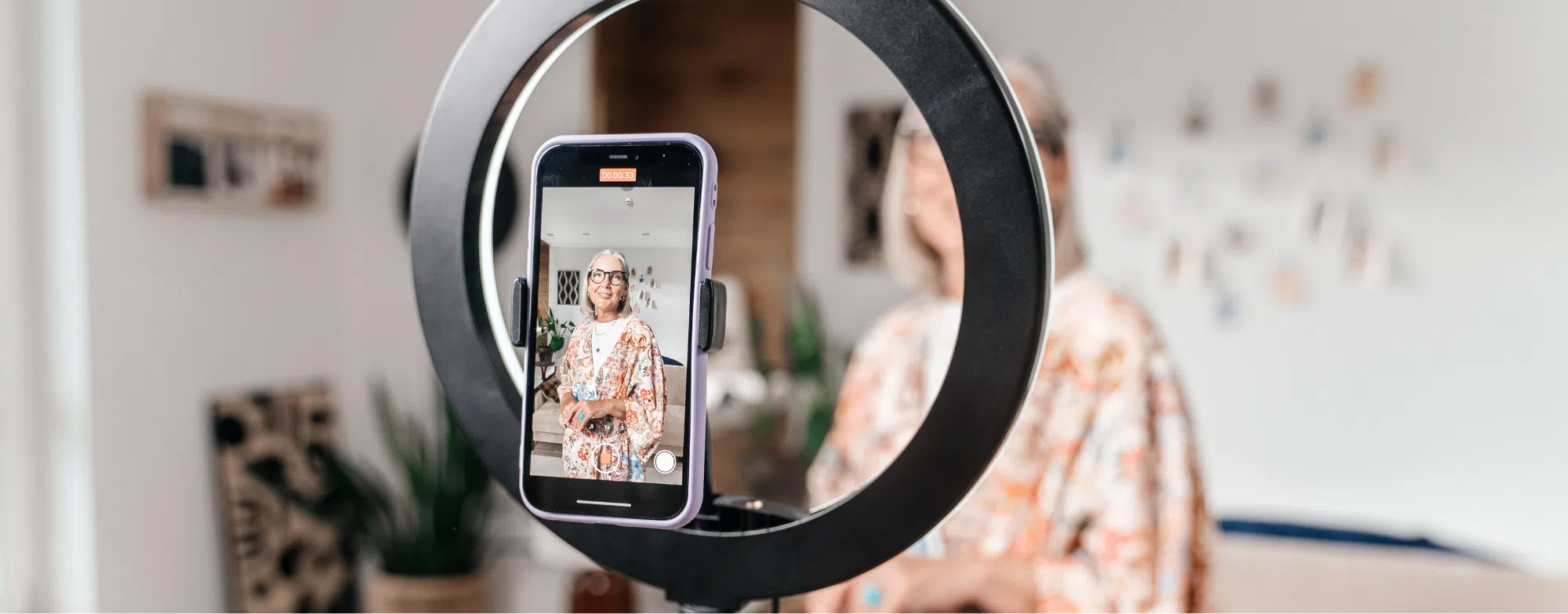In last month’s newsletter, Chief of Fundraising Strategy and Services Suzanne Battit outlined four key steps for effectively stewarding year-end donors through the holiday season and beyond. One of her recommendations was to promptly send out impact reports to all donors, part of which could be in video format.
Incorporating video can elevate a donor’s feeling of connection to the organization that words and images on a page can’t quite replicate. While personal visits to every donor – even every high-impact donor – may not be feasible, pulling back the curtain in a short video or two invites donors to really see the impact of their donations.
This is a video that communicates both impact and a search for a Development Guild client
Below, Development Guild’s Managing Editor Karin Shedd shares 5 tips for effectively communicating organizational impact through video without the need for lots of time or budget.
1. Use Existing Technology
First and perhaps most importantly: you don’t need to break the bank to incorporate a video element to impact reports. Odds are good that multiple members of any nonprofit’s team have a smartphone or tablet produced in the last ~3-5 years that has all the capability needed to create high-quality content. Footage from a phone or tablet feels more personal than formal footage with all the audio/visual bells and whistles – it’s the difference between watching a slick commercial and video calling with a friend.
Any smartphone can become a powerful video tool with a few preemptive measures:
- Lighting
- When recording, have the subject face a source of soft light. A window with plenty of sunshine is best, but a room with a few lamps with shades
- will often work as well. Adjust your location relative to the light source until you are softly lit with no harsh shadows
- Avoid harsh, direct light (e.g. a fluorescent light from above)

- Sound
- A modern smartphone held within a yard or so of the subject’s face will have decent audio. However, if you would like to boost the quality even more, consider using a second phone that is closer to the subject. Simply hit ‘record’ at the same time on both phones, with one taking video from farther away and one placed on a table in front of the subject as close as possible
- On the second phone, you can record a video and just use the audio of it, or you can use an app specifically meant to record audio. Apple iPhones all come with the “Voice Memos” app pre-installed, and Android users have myriad options available in the app store
- Background and other aesthetics
- If possible, choose a background with warm, inviting colors. Bookshelves, art, and furniture work well for this, as do shaded gardens or other outdoor areas (provided you stay out of direct sunlight!). Really, anything is better than a blank white wall
- Try to coordinate the wardrobe of the video’s subject with the background. For example, if the background is a brown wall or otherwise contains lots of brown, wear a shirt of a bright and contrasting color
2. Anecdotes are Key
Effective analysis and use of data is the backbone of many organizations. However, for videos to go with impact reports, leave the number crunching out. Without significant investment of time and skill, communicating facts and figures via video is a much more difficult task and is likely to be less effective than infographics, charts, and bullet points in the rest of the report.
Instead, use videos to offer a behind-the-scenes glimpse at a specific event, function, or activity that is important for your organization and that most donors would otherwise not be able to attend – community service events, tours of new infrastructure, behind-the-scenes of patient care or research, a local longstanding fundraising run, etc.
Identify a few members of your team who would feel confident and personable on camera to give donors a tour of the event, function, or activity. Before filming, brainstorm a few simple questions to ask them that quickly and clearly outline the event. Remember to have each person introduce themselves and speak in full, complete sentences whenever possible.
- Introduce yourself – what is your name and what is your relationship to the organization?
- E.g., “my name is Karin Shedd and I am the Managing Editor at Development Guild”
- Where are we and what is this event?
- “Today we are at the [name of event here], which we do every year on [date]”
- What is the purpose of this event? How long have we been doing it?
- “The purpose of this event is to…”
- “The reason we do this event is…”
- “Why we’re out here today is to…”
- What will the impact/outcome of this event be?
- “By the end of today, we will have…”
- “The result of today will be…”
Remember that it’s pre-recorded, so your on-camera personalities shouldn’t feel pressure to be perfect – any mistakes or flubs can be removed from the final edit. Additionally, consider making a list of specific shots you would like to get for the video. It can be easy to forget what you’d like to showcase in the hustle and bustle of the actual event/activity, so having a concrete list will ensure you capture everything you’d like to share with donors.
Below is a video that Development Guild did in partnership with The Salvation Army – Massachusetts Division to help advertise a search. The footage from the back-to-school event was filmed entirely by an Army staff member with a smartphone.
3. Informality is A-Okay
The video above required extensive editing because it was meant to reach an audience (candidates) that may not be familiar with the organization or the search. However, the same is not true for an ‘impact video’ sent to an audience that is already invested in the organization – donors!
Therefore, the fanciest editing is not necessary. A sincere, heartfelt thank you, a brief overview of the organization’s goals for the year, and a focus on a specific behind-the-scenes event as outlined in the previous point are far more important than fancy editing techniques. There are myriad free video editing apps on top of built-in software like Clipchamp for Windows and iMovie for Mac that are more than sufficient for organizing your footage how you’d like it to be, removing any stutters or mistakes, and even adding copyright-free background music from places like Pixabay, SoundCloud, and YouTube.
4. If Possible, Use Captions
Adding captions to your videos serves two purposes: first, text onscreen in the first few seconds of a video grabs attention; second and much more importantly, it makes your video accessible to donors who are deaf, hard-of-hearing, or otherwise have trouble processing audio (especially if that audio comes from a noisy event).
If your organization has a YouTube page, you have the option of utilizing YouTube’s automatic captions. However, these are often not as precise nor as visually appealing as creating the captions yourself.
This step will require more time and effort, especially if no one on your team has experience editing videos. However, after a short learning curve that can be aided by a near-infinite number of existing tutorials on the internet (especially YouTube), captioning videos is much more a matter of putting in the time than it is figuring out how to do it.
5. Reuse, Re-Edit, Re-Post
Each time you record an event, activity, interview, etc., make as much content as you can out of it. You’ve already done the hard part by wrangling people into being on-camera, planning your shots, and attending the event as a videographer. Now, you can use that content on multiple platforms for different audiences – as short snippets on Facebook/Instagram Reels, as extra bonus content for select donors, as clips to encourage volunteers, and much more.
By way of example, below are links to playlists created by Development Guild for some of our search clients. We interview a person or two at the organization, create a main video that advertises the organization’s mission and position for which they are hiring, and also cut shorter tidbits in vertical format to go out on LinkedIn and other social media sites. That way, a single 20-30 minute interview becomes at least 3-5 different pieces of content.

|

|
Creating videos that effectively communicate your organization’s impact can seem daunting if you’ve never done it before, but the results will be more than worth the effort. Being able to see and hear the impact of their donations on top of the big-picture facts and figures in the rest of the impact report will elevate those ever-important feelings of connection to the organization.



